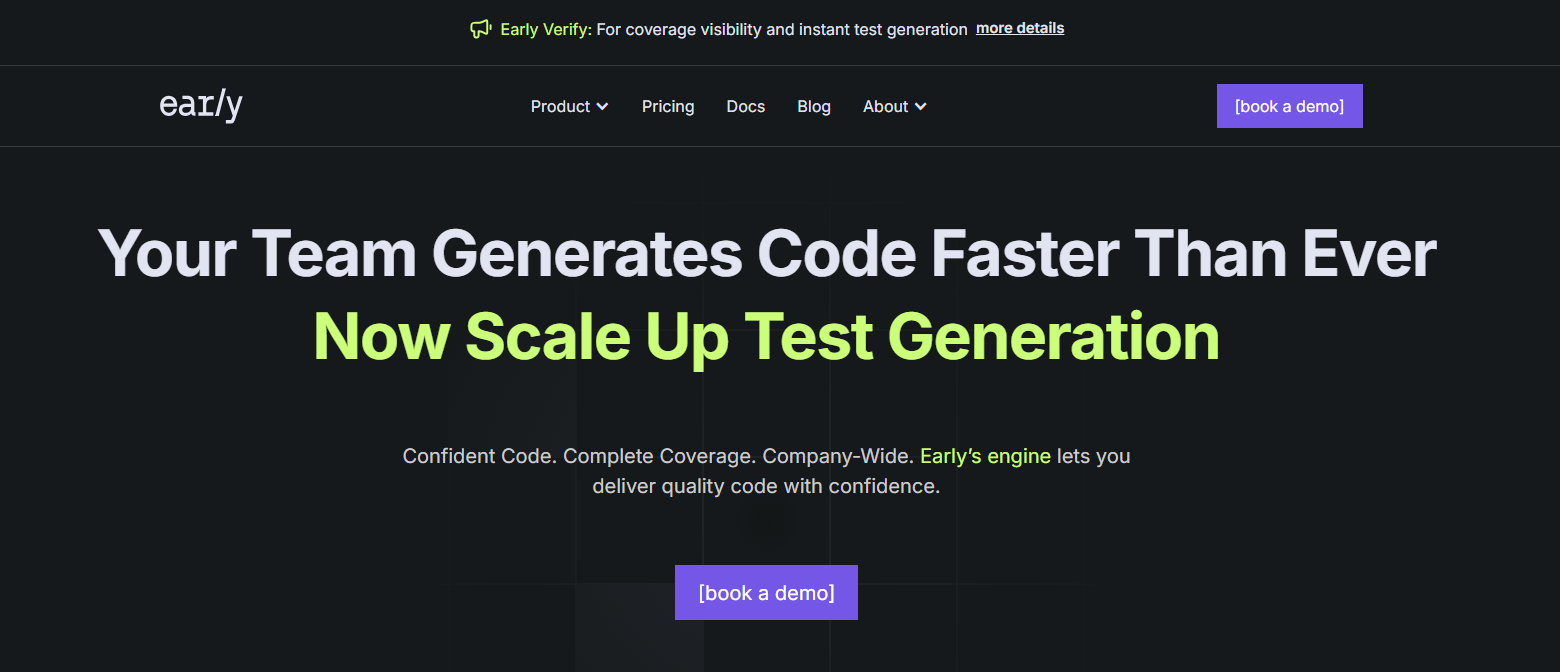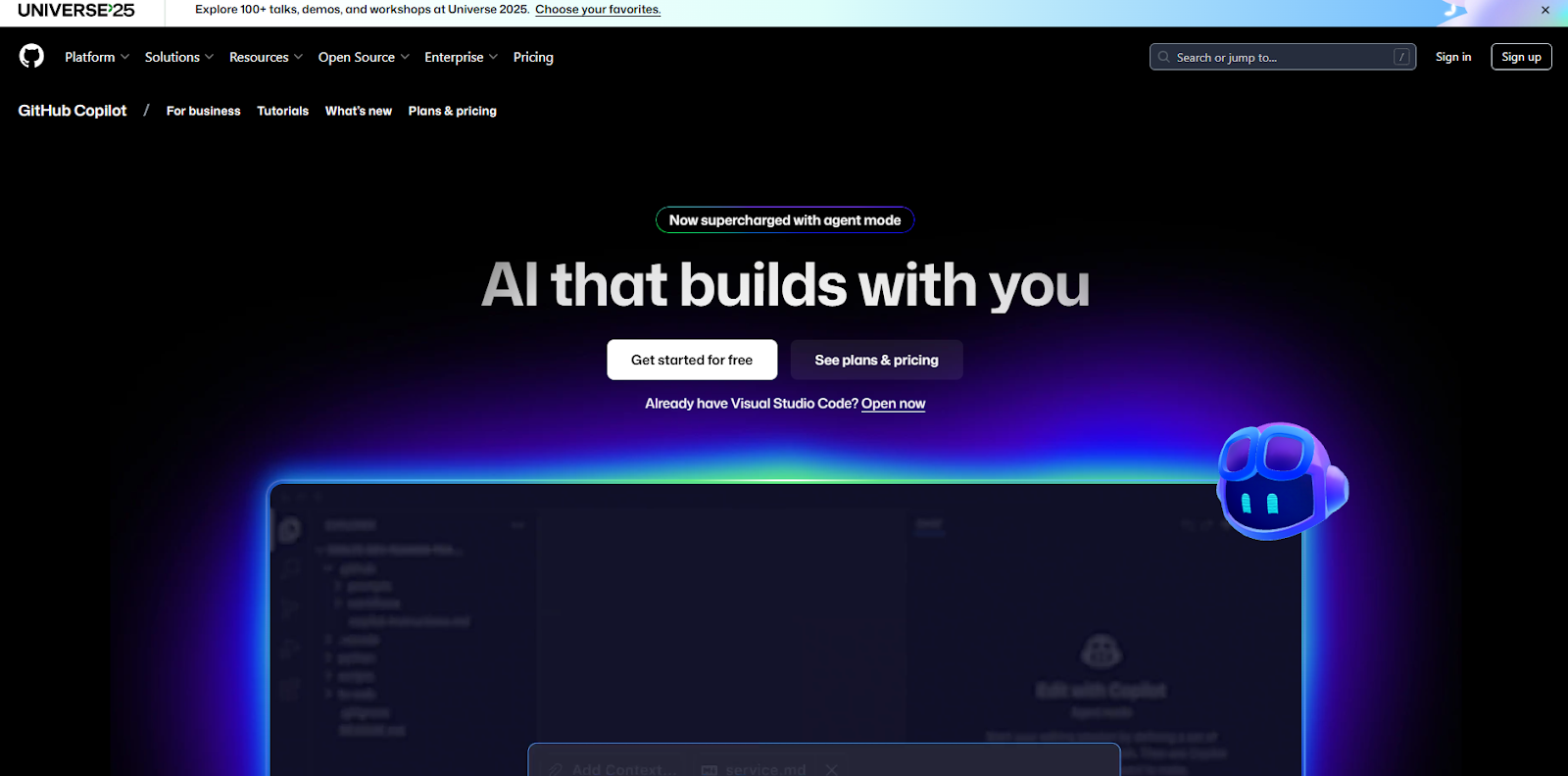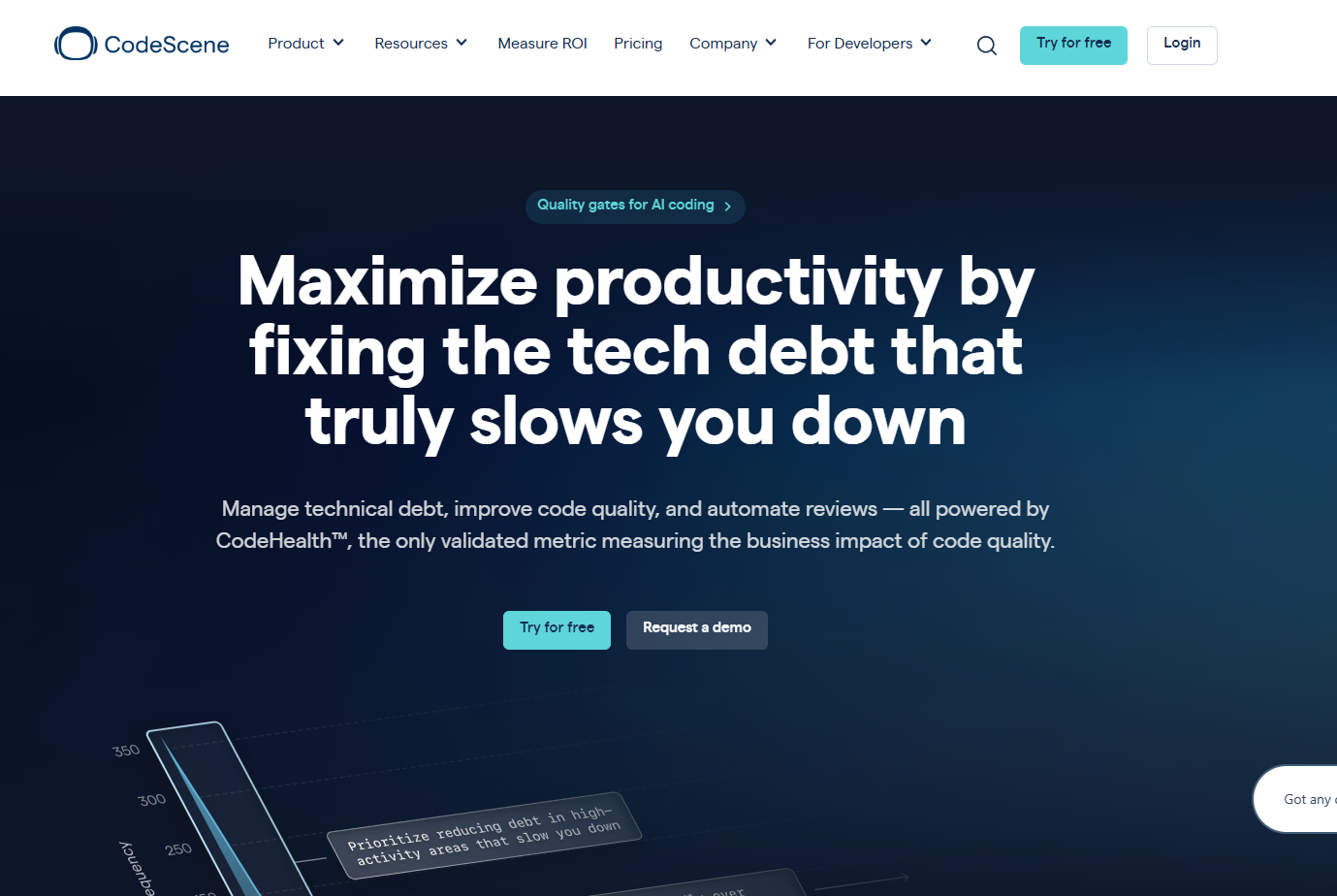Table of Contents
Developers love to argue about tabs versus spaces, but most of us agree that code reviews are the necessary evil we can’t skip. They catch the typos, the “just-one-more-commit” bugs, and the rogue TODOs that mysteriously appear at 2 a.m.
Now imagine reviewing code you didn’t even write. Google recently revealed that more than 25 percent of its new code is AI-generated. If the world’s biggest engineering teams are already shipping that much machine-written code, every pull request carries new uncertainty.
So, how do you keep reviews thorough when the volume and the author change this quickly? Let's compare the top AI code review tools and show how they can help teams catch subtle bugs, validate fixes, and maintain confidence in every release.
AI-powered code review tools check source code for quality, security, and maintainability problems. Instead of following fixed rule sets like traditional linters, they draw on patterns from large codebases and account for context.
Because these models adapt as the codebase changes, they can scan entire repositories, follow dependencies, and deliver focused recommendations at scale. Teams get faster, more consistent feedback, and avoid the fatigue that slows manual reviews. This new generation of tools forms a crucial layer in modern DevSecOps pipelines, complementing red-team vs. blue-team strategies used to test and harden defenses.
Teams are pushing code out faster than reviewers can keep up. AI code review tools offload the repetitive checks that drain senior engineers, such as style enforcement, unit-test coverage gaps, and known-issue scanning. They continuously surface logic flaws and subtle security risks that are easy to miss in manual review, and many can maintain or suggest follow-up tests after each change. This reduces the number of last-minute regressions that derail sprints and drive up incident costs, while supporting broader security oversight models like a virtual CISO (vCISO) approach.
For engineering leaders, automated reviews mean faster merges, fewer production bugs, and less time lost to rework.
Selecting an AI code review platform isn’t just about ticking feature boxes. You need to balance integration, security, scalability, and the level of automation you expect. Use the checkpoints below to guide your evaluation.
Integration and Workflow
Assess how well the tool fits into your development process. A strong platform should connect seamlessly to your CI/CD and IDE pipeline so every commit or pull request triggers an automated review. Continuous checks keep quality high without adding manual overhead.
Security and Access Control
Security and privacy are non-negotiable. Look for deployment options that support strong encryption, and review the provider’s data-retention policies to protect proprietary code. Strengthen this with solid identity and access management practices so only authorized team members can access sensitive repositories.
Cost, Scalability, and Capability
Consider how pricing scales as your team and codebase grow. Choose a licensing model that avoids steep per-seat fees and can handle large enterprise-level repositories without performance issues. Finally, decide whether you need a suggestion-based assistant or an agentic option like Early Catch, which generates and maintains automated tests and validates fixes in real time for long-term reliability.
Below is a curated list of leading platforms, each offering distinct strengths in accuracy, integration, and scalability. Teams can choose what best fits their stack and release pace.

1. Early Catch (Early)
Early Catch adds an automated, agentic testing layer that works alongside human code reviewers. As code changes are pushed, it analyzes the diff, identifies areas most likely to introduce bugs, and generates focused unit tests to cover those paths. When developers address the feedback, Early Catch reruns its checks immediately and reports whether the fixes hold. Reviewers see the results inside the same pull-request workflow because it integrates directly with standard CI/CD pipelines and version-control systems. This continuous validation verifies that problems are resolved and test coverage stays intact, while leaving final judgment and approval in the hands of the engineering team.
Key Features:
- Agentic engine that generates and maintains targeted unit tests for JavaScript, TypeScript, and Python.
- Real-time validation of commits and pull requests, confirming that identified issues are fixed before merge.
- Seamless integration with GitHub, GitLab, and standard CI/CD pipelines to keep reviews moving.
Best Use Cases: Teams with high release velocity that want every review backed by automated, verifiable tests. Ideal for organisations seeking stronger code quality and faster approvals without adding more human reviewers.
Review:
“Very easy to set up and use, saving huge amount of time in creating comprehensive test cases which also helps in catching bugs early.” -Product Hunt

2. DeepCode (Snyk Code)
DeepCode checks new commits against patterns learned from a wide range of open-source projects to catch security flaws and code-quality issues. It highlights potential vulnerabilities in pull requests so reviewers can focus on higher-level design and logic instead of routine checks.
Key Features:
- Detects vulnerabilities in context across many programming languages
- Works seamlessly with Snyk’s dependency scanning for a single security view
- Offers inline suggestions inside GitHub, GitLab, and Bitbucket
- Continuously updates its models with new open-source data
Best Use Cases: Security-driven teams that need actionable findings before merging.
Review:
“Great SAST tool for smaller companies, not yet Enterprise ready.” - Gartner

3. SonarQube with AI Enhancements
SonarQube builds on its established static analysis with AI-generated rules and remediation tips. During reviews, it flags code-quality and security issues and suggests possible fixes, letting reviewers focus on architectural and logic concerns while routine checks run automatically.
Key Features:
- AI-assisted fixes for complex bugs and code smells.
- Broad language support with enterprise dashboards.
- Seamless CI/CD and IDE integrations.
- Governance controls for large organisations.
Best Use Cases: Enterprises needing consistent, policy-driven reviews across hundreds of repos.
Review:
“It is a good tool for static code analysis and gives detailed reports of quality issues, security vulnerabilities and even bugs to some extent. It supports multiple programming languages and integrates with the popular CI/CD pipelines.” - Gartner

4. AWS CodeGuru
A managed service that reviews Java and Python code for performance and security issues and profiles runtime behaviour. Combining static analysis with live profiling gives reviewers concrete performance data and security insights before code hits production.
Key Features:
- Runtime profiling to identify costly methods and memory leaks.
- Security detectors tuned to AWS best practices.
- Tight integration with AWS developer tools.
- Pay-as-you-go pricing.
Best Use Cases: Teams already in the AWS ecosystem seeking automated feedback and performance validation.
Review:
“I have had no difficulties navigating through this tool to find out the best suited codes and programs that I need for my projects.” - G2

5. Codacy
Codacy automates code-quality checks and provides AI-driven suggestions for projects of any size. Quality gates run automatically on every pull request, taking care of style rules and linting. That leaves reviewers free to concentrate on logic and overall architecture instead of routine clean-up work.
Key Features:
- Customisable quality rules and detailed metrics
- Pull-request checks integrated with all major Git providers
- Dashboards that track trends and highlight problem areas across teams
- Support for more than 40 programming languages
Best Use Cases: Distributed teams that need consistent standards and fast, automated feedback.
Review:
“We love how it keeps tracks of our code and identifies issues security vulnerabilities, based on those recommendations we can take actions and modify our code.” - Gartner

6. GitHub Copilot PR Reviews
GitHub Copilot PR Reviews goes beyond code completion. It can draft natural-language summaries of a pull request, suggest targeted changes, and even generate test stubs. Reviewers get a clear overview and actionable feedback early, which helps shorten the entire review cycle.
Key Features:
- AI-generated comments and test stubs.
- Pull-request summaries for quick understanding.
- Deep GitHub Actions integration.
- Adaptive responses based on project context.
Best Use Cases: GitHub-centric teams looking for conversational AI assistance in reviews.
Review:
“User-friendly, has all functionality required, meets key user needs and resolves pain points, with support on ad hoc basi.” - Gartner

7. Sourcegraph Cody
Cody creates a complete index of the codebase, allowing quick searches and deep exploration. When changes are under review, it provides context-aware refactoring suggestions. Reviewers can move easily between related files, trace dependencies, and get targeted guidance while evaluating complex updates.
Key Features:
- Performs semantic searches across large monorepos for quick navigation.
- Offers AI-guided recommendations to help plan and carry out refactors.
- Compatible with a range of version-control platforms.
- Provides enterprise deployments with detailed, fine-grained access controls.
Best Use Cases: Large organisations managing sprawling or multi-language codebases.
Review:
“Cody stands out for its ability in understanding legacy code. We are able to connect our company's different code repositories. It integrates flawlessly with our developer's mostly used IDEs.” - Gartner

8. Sweep.dev
Sweep.dev turns bug reports or feature requests into pull requests with the necessary code changes and tests. Reviewers can then focus on verifying the patch and its impact instead of writing boilerplate fixes.
Key Features:
- Turns natural-language bug reports or feature requests into actual code changes.
- Generates unit tests automatically for every patch it creates.
- Hooks directly into GitHub to open pull requests without extra steps.
- Learns from each accepted merge so suggestions improve over time.
Best Use Cases: Teams wanting a lightweight AI “junior developer” to handle small tasks.
Review:
“Excellent tool, if used in a surgical sort of way. Very powerful core concept of expressing goals to AI via tasks (i.e. GitHub Issues)” - Product Hunt

9. CodeScene
It uses behavioural code analysis and ML to predict hotspots and technical debt. It also provides reviewers with risk heatmaps and historical context, helping them focus on the most fragile parts of the code.
Key Features:
- Commit-history-based risk prediction.
- Visual maps of code health and team coupling.
- CI/CD integrations for continuous insight.
- Refactoring planning support.
Best Use Cases: Engineering managers prioritising reviews around high-risk areas.
Review:
“CodeScene stands out by focusing on behavioral code analysis rather than just static rule checks. The hotspot analysis highlights the most critical and frequently changed parts of the system, making it clear where technical debt truly matters.” - G2

10. Code Intelligence
Code Intelligence employs AI-guided fuzz testing to find security weaknesses. During code review it launches automated edge-case tests, revealing problems that a typical inspection might overlook and supplying reviewers with additional evidence of the code’s resilience.
Key Features:
- Runs guided fuzz tests with little configuration required
- Detects memory errors and complex logic flaws automatically
- Supports both native and web applications
- Generates compliance-ready reports for audit needs
Best Use Cases: Security-critical products like fintech, automotive, and IoT software.
Review:
“Great tool for development teams. The CI Fuzz delivers on its promises. The CI team is a professional one starting with sales and finishing with development and support.” - Gartner

11. Jit.io
Provides continuous security and compliance checks in DevSecOps pipelines. Automates risk assessment and control enforcement so reviewers can focus on application logic while security requirements stay enforced in the background.
Key Features:
- Real-time risk assessment and policy checks.
- Auto-provisioned security controls.
- GitHub/GitLab integration for continuous compliance.
- Dashboards for regulatory tracking.
Best Use Cases: Teams embedding security reviews as code without slowing release cycles.
Review:
“Easy implementation and fast onboarding for the employee to start working with the system” - Gartner
AI code review is moving past the “copilot” stage into an era of agentic partners. First wave assistive tools were valuable for highlighting syntax errors and style issues, but modern engineering demands more than suggestions. Teams need systems that act on findings, validate fixes, and continuously safeguard code quality without increasing human workload.
This shift is driven by rising security and privacy expectations. Regulatory frameworks and customer audits increasingly require verifiable proof that code has been tested and remains compliant after every change. AI that simply comments on pull requests cannot meet that bar, which is why many teams are exploring AI-powered penetration testing to strengthen their overall security posture.
Agentic platforms like Early Catch exemplify the next wave: tools that run automated tests, surface critical issues in real time, and confirm that corrections hold.
Fast release cycles and machine-generated code make it hard to prove that every change is ready to ship. Most review tools stop at comments, leaving teams to confirm that fixes work and coverage holds manually.
Early Catch solves that gap with agentic testing built to run parallel with human review. It surfaces issues as code changes land, suggests focused unit tests, and re-validates fixes in real time, so reviewers see evidence, not just recommendations. Your team controls the pull request while gaining continuous proof that each correction stands.
If you need reviews that keep pace with modern development without sacrificing confidence, book a demo with Early Catch.



